Of all the instruments you can find on a modern car dashboard,
Only one is a legal requirement – the speedometer and its built-in milometer
(Also, called an odometer)
In common with other developments in-car technology,
The trend is now towards using electronics in speedometers.
But most cars – even ones being built today have a mechanical speedometer,
Usually with a needle and calibrated dial to show the speed. The design of this type of speedometer has hardly changed in the last 50 years.
Inside a mechanical speedometer
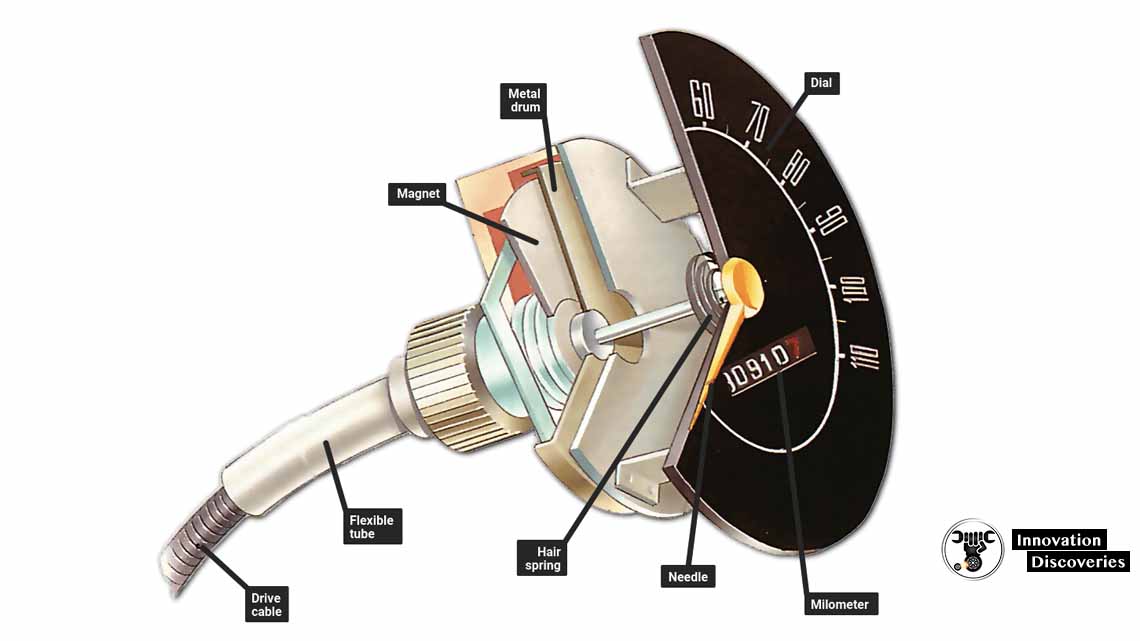
Inside the speedometer to the gearbox output shaft. The magnet rotates with the shaft and its magnetic field
Attracts a metal drum to turn the speedometer needle against the force of a hairspring. The needle moves round the dial until the restraining force of the
Hairspring brings it to rest to give a reading of the road speed.
Operation
Mechanical speedometers measure the speed of a car by being linked
Mechanically with the gearbox output shaft. Since this shaft lies ‘downstream’ of the gearbox,
The speed with which it rotates is independent of gear changes and
So, gives a true measure of the road speed.
Inside the gearbox, the output shaft contains a gear wheel which rotates with the shaft. Linked to this gear wheel, and driven by it, is a small pinion gear,
The speedometer chive pinion,
Which links in turn to the speedometer cable that runs up to the speedometer itself.
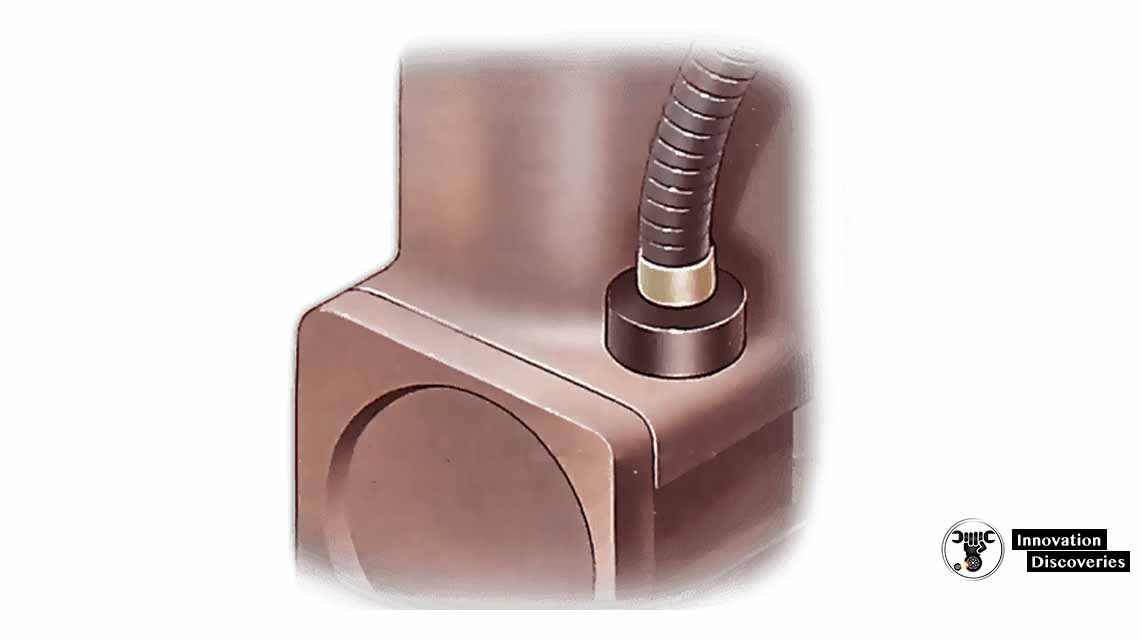
The speedo cable consists of an inner cable running inside a protective outer sheath. The ends of the speedometer inner cable are squared off,
And fit into squared holes in the drive pinion at the gearbox and the drive in the back of the speedometer. As the pinion rotates, driven by the gearbox output shaft,
It causes the inner cable to rotate with it.
The other end of the cable fits a drive shaft leading into the speedometer. On the end of this shaft is a magnet. Positioned close to (but not touching) the magnet is a cup-
Shaped metal drum that is attached to the needle giving the reading on the dial. A small coiled hairspring holds the needle at zero.
Needle

Variations
The two other common types of mechanical speedometer give the
Reading by a bar or a mark moving along a straight calibrated scale.
Both are roughly similar in operation to the round dial type of speedometer,
A cable-driven by the gearbox output shaft turns a magnet which causes some sort of
Indicator to move against the force of a restraining hairspring.
In one type the indicator consists of a moving ribbon attached at each end to a spool. The magnet causes the ribbon to reel off one spool to the other against the
Force of the hairspring.
As the ribbon moves,
A mark on it lines up with the calibrated scale to give a reading.
The other type of indicator using a straight scale rather than a dial has a barrel marked with a line. The magnet causes the barrel to rotate until stopped by the hairspring. Again, as the barrel moves,
The mark on it lines up with the scale to indicate the speed.
On both these types of speedometer, the ribbon or barrel is
Usually, a different color on each side of the marker line to
Make the speed easier for the driver to read.
Ribbon
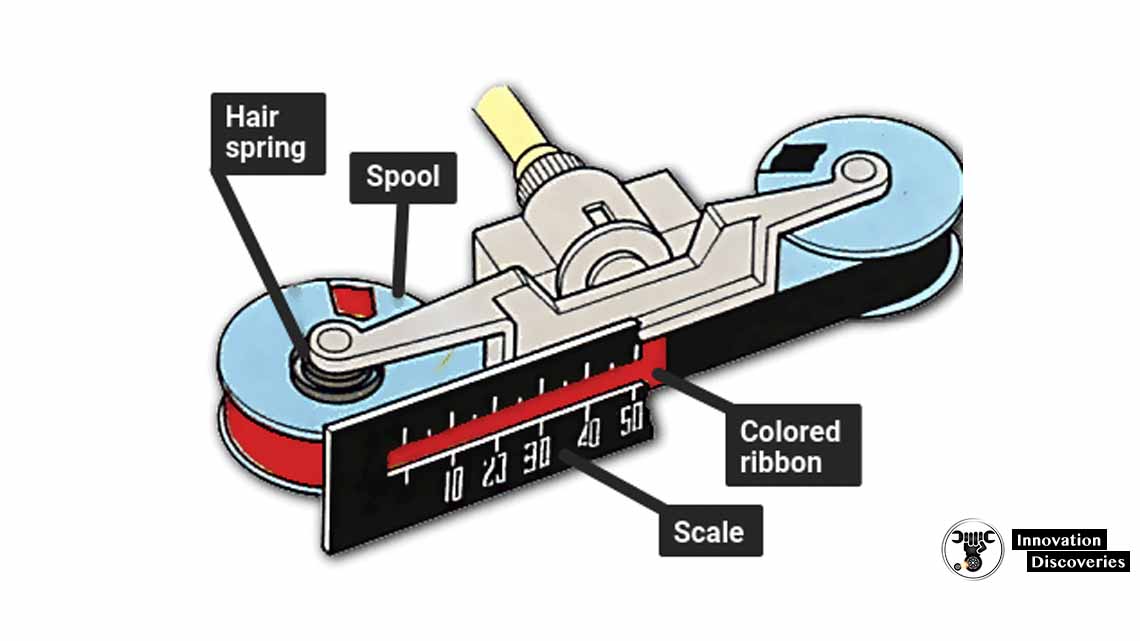
Drum
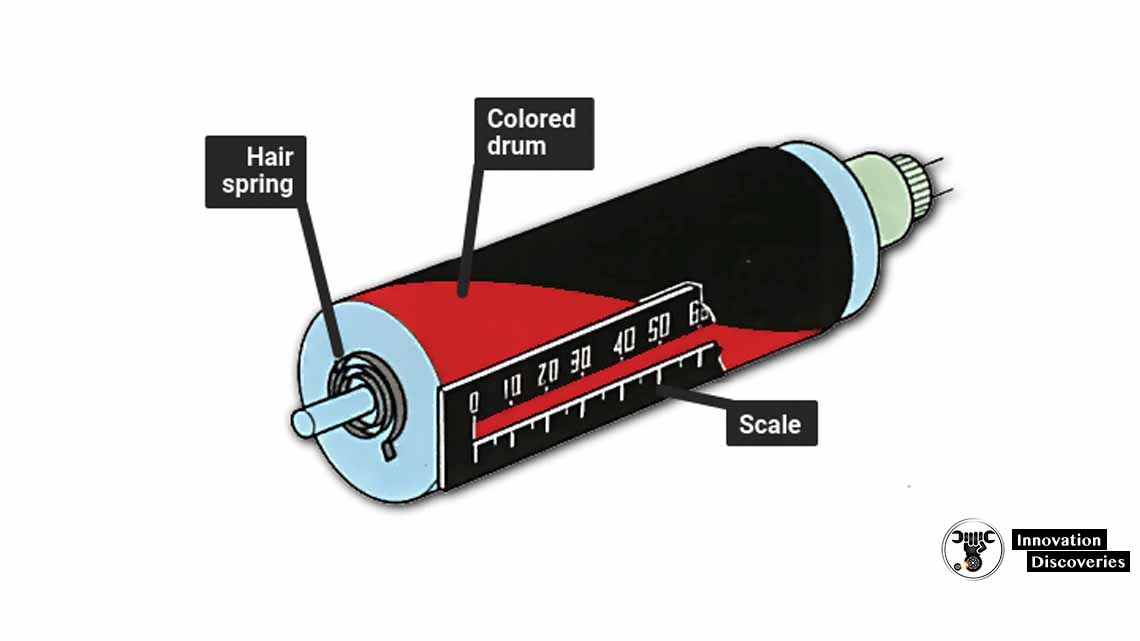
As it does so, a mark on the drum lines up with a straight scale to indicate road speed.
Electronic speedos
In common with the trend towards electronic dashboard instruments,
Electronic speedometers are now becoming much more popular,
Even though mechanical ones are generally reliable.
The most common type has a magnet attached to the gearbox output shaft and
An electronic unit positioned close by to act as a pickup. Every time the rotating magnet passes the pick-up unit,
The unit sends a pulse of electric current down a wire to the speedometer.
An electronic ‘black box’ inside the speedo uses these impulses to
Calculate the speed of the car.
How an milometer works
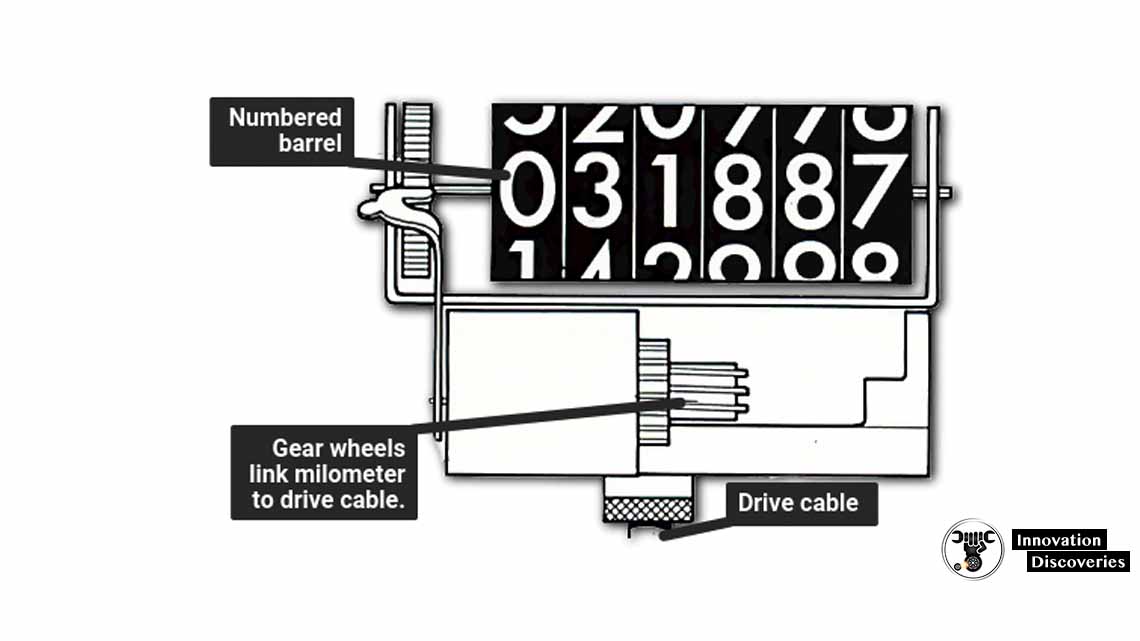
Since the speedometer measures the rotation of the gearbox output shaft,
It is a relatively simple matter to use this information to work out how far the car has traveled. This is why the milometer (often called an odometer) is built into the speedometer.
The milometer is worked by a small gear linked to the inner cable
Where it emerges into the speedometer.
This gear drives a series of gears that rotate separate barrels carrying numbers 0 to 9.
The gearing is arranged so that each number clicks on after the correct distance and,
When it reaches number 9, it moves its neighbor on by 1.
Some cars have two Milo meters s. One (called a trip meter) the driver can reset via a
Dash-mounted control to measure distances. The other milometer cannot be reset to
Ensure that it measures the mileage traveled by the car during its lifetime,
Or at least until it ‘goes round the clock’ (usually 100,000 miles (ca. 160,934 km)). All cars have the second type of milometer; only some have the first too.
How accurate is a speedometer?
No speedometer can be perfectly accurate. For example, the measured speed is bound to
Change slightly from the true road speed,
If the tires are not at their correct tire pressure and also as the tires wear down.
So, for safety reasons, the law requires speedometers to be
Accurate within a range of speeds:
It must read no slower than the actual road speed of the car,
And it is allowed to give speeds of up to 10 percent greater plus 2.5mph (ca. 4 kilometers per hour).
The 2.5mph (4.02 kilometers per hour) is included because of a 10 percent error at
Very slow speeds would mean that the speedometer would have to be accurate to,
Say 0.5mph (0.8 kilometers per hour), which is not practicable.


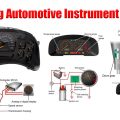
One Comment